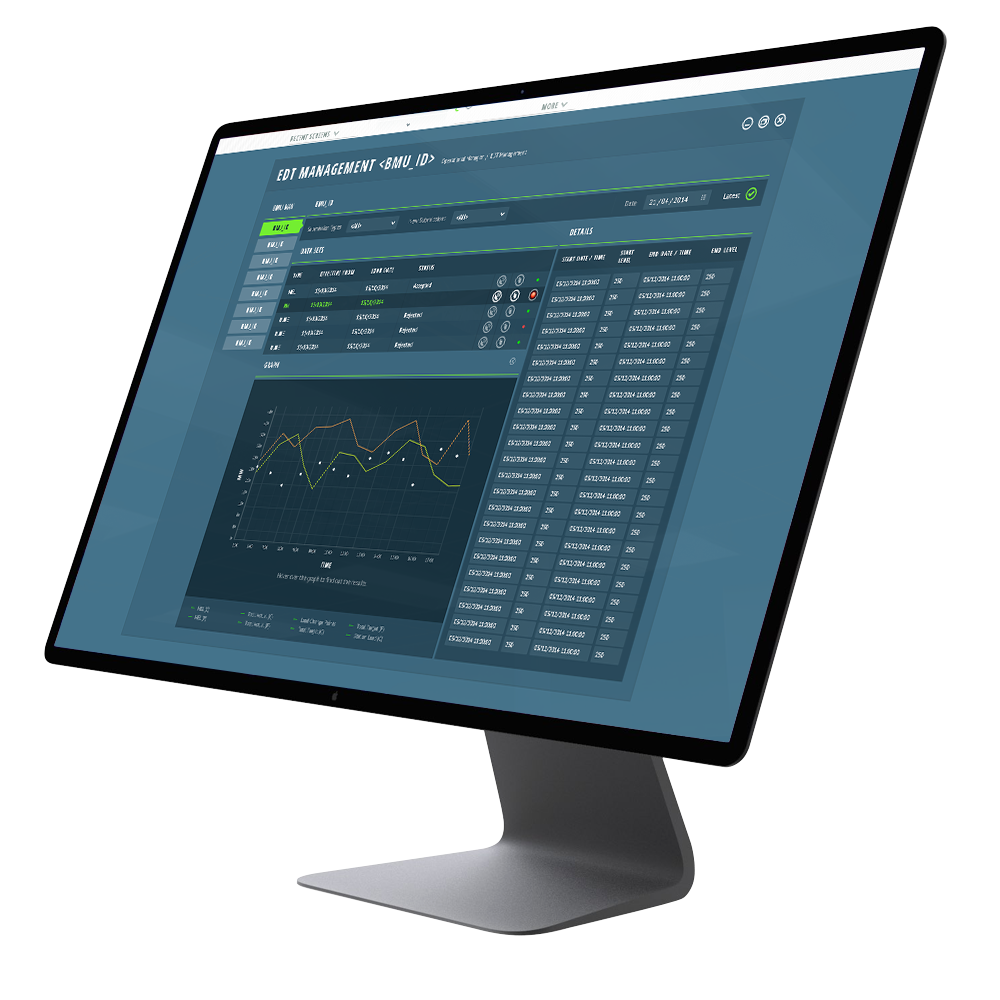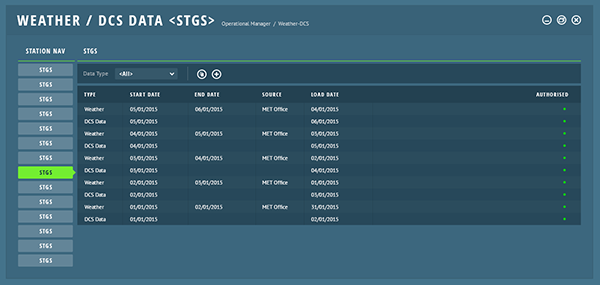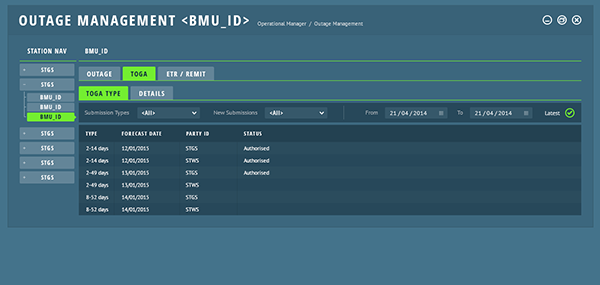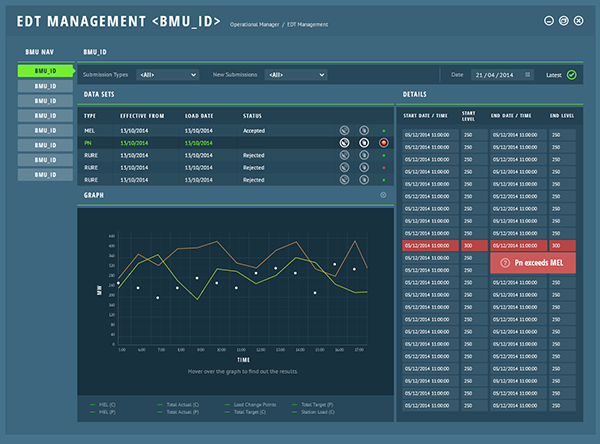Genstar4 Power Scheduler
The Power Scheduler module covers the activities of generators, VLPs and asset operators for availability and production/consumption scheduling, and to support the associated data exchange requirements of the National Grid via EDT, either using fixed EDT MPLS line or Wider Access APIs.

The Power Scheduler module supports the following activities:
- Calculating maximum unit availability.
- Providing mandatory data to National Grid via EDT or Wider Access APIs.
- Managing availability adjustment factors (constraining the availability).
- Calculating the operating schedule.
- Notifying National Grid of intended physical position.
- Managing and submitting dynamic data.
Recording unit outages
- Outages can be recorded for the planned maintenance program and retrospectively for unplanned events such as equipment trips.
- Outages are recorded at the generating unit level and allow the operator to specify either a complete outage (zero capacity) or partial reduction of capacity.
Recording weather forecasts

- Weather forecasts can be recorded for configurable variables such as temperature, pressure, humidity and wind speed.
- These forecasts can be used to constrain the short-term technical-availability profile (on which the maximum export limit can be based).
- Forecast data provided by a weather forecasting service can be automatically loaded or the data can be recorded manually.
- The loading of weather data can automatically trigger a recalculation of the MEL and its submission to National Grid via EDT or Wider Access APIs.
Generating Outage and Availability forecasts

Outage and availability forecasts can be created for provision to National Grid for network planning and ETR/Remit submissions. The forecasts can be automatically generated for the duration and timescales required by National Grid.
- Recorded turbine outages are used to reduce the corresponding capacity from the net generating unit availability.
- Creation of outage groups to allow multiple outages to be configured and amended prior to conducting ETR/Remit calculations.
- Unit outage data can be used for the production of the required TOGA/OC2 exports.
Compiling the Maximum Unit Availability
The generating unit availability profile is the basis for compiling the maximum output available (Maximum Export Limit - MEL) to export to National Grid via EDT or Wider Access APIs.
- The unit generating capacity is constrained by recorded generating unit outages and, optionally, the forecast weather values to create a profile of half-hourly availability up to five days ahead. The system then calculates a shaped Maximum Export Limit profile using the unit ramp rates.
- Alternatively, the user can compile the profile manually, copy and edit an existing dataset or load from a 3rd party system via flat file or APIs.
Calculating the operating schedule
Market participants are required to submit the unit operating schedule (Physical Notification - PN / Final Physical Notification - FPN) to National Grid.
The operating schedule is compiled for up to 5 days ahead and is validated against the Maximum Export/Import Limit prior to submission. Genstar4 provides several options for the compilation:
- Generated from the Maximum Export/Import Limit.
- Compiled manually or cloned from an existing dataset.
- Imported from an API, .CSV file, or National Grid formatted file.
- Calculated from the traded position.
Upon acceptance of the PN/FPN, a file can be automatically generated and exported in a variety of formats to a 3rd party e.g. a Power Purchase Agreement (PPA) counterparty.

EDT - Submitting planning and operational data to the System Operator
Planning and operational data for each generation/consumption unit can be compiled for submission to the National Grid via EDT or Wider Access APIs. The data can also be loaded from externally created files or APIs.
The data requirements include minimum/maximum export/import limits, as well as ramp rates, minimum on and off times and notices to deliver.
The submission interface provides sequencing, validation and receipt of acknowledgements (ACK/NACK).
Submission can be made from the original screens where the data was compiled, from a rapid submission facility where all pending data is managed or fully automated from data consumed via APIs or external file loads.
ETR and Remit
ETR requires the owner of the unit / asset to report planned and actual changes to availability of more than 100MW at the BMU level or 200MW at the station level to National Grid within one hour of them becoming aware of the change.
Remit requires owner of the unit / asset to report both planned and unplanned changes to availability and the trigger point can be set by an authorised user.
The following ETR/Remit features are supported by Power Scheduler:
- Automatically detects planned and actual availability changes that should trigger ETR and Remit submissions.
- Manages and automatically tracks outages scheduled for more than 3 years into the future in order for the ETR submissions to be triggered at the appropriate time.
- Produces and submits the XML submission files to the National Grid MODIS system via EDT (supporting both FTP and web service mechanisms).
- Provides a Tracking Screen to monitor ETR and Remit submissions and statuses (including accepted and rejected) and the ability to view the submission files. Provides alerts for rejected submissions to support management by exception.
- Export the data to a customer specific reporting system or website.
- Supports the ability to enter ‘Additional Availability’ for incorporation in ETR/Remit calculations and submissions.
Genstar4 also provides full support for dispatching power stations via EDL
Click here to request a call back or telephone +44 (0)23 9431 7620
Contact us for support at any level
Telephone: +44 (0)23 9431 7620
Email: info@enegen.co.uk